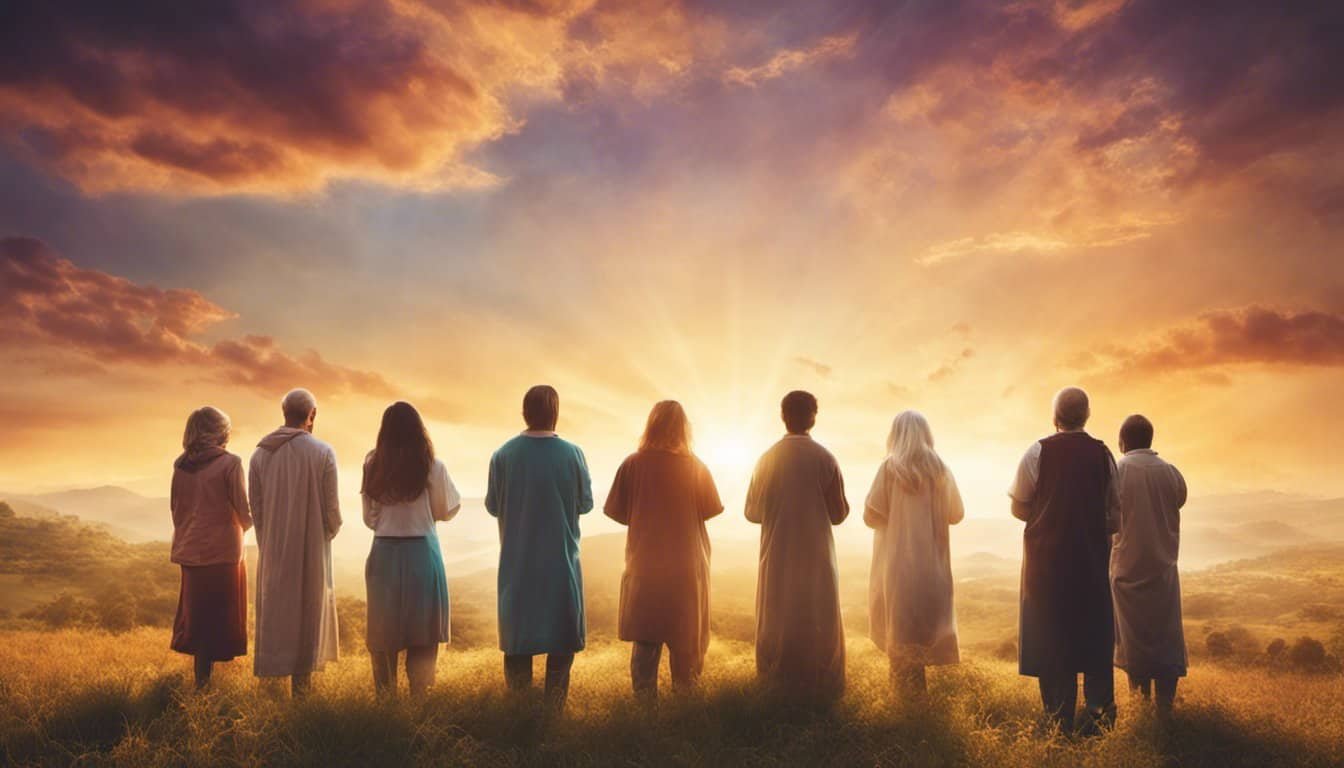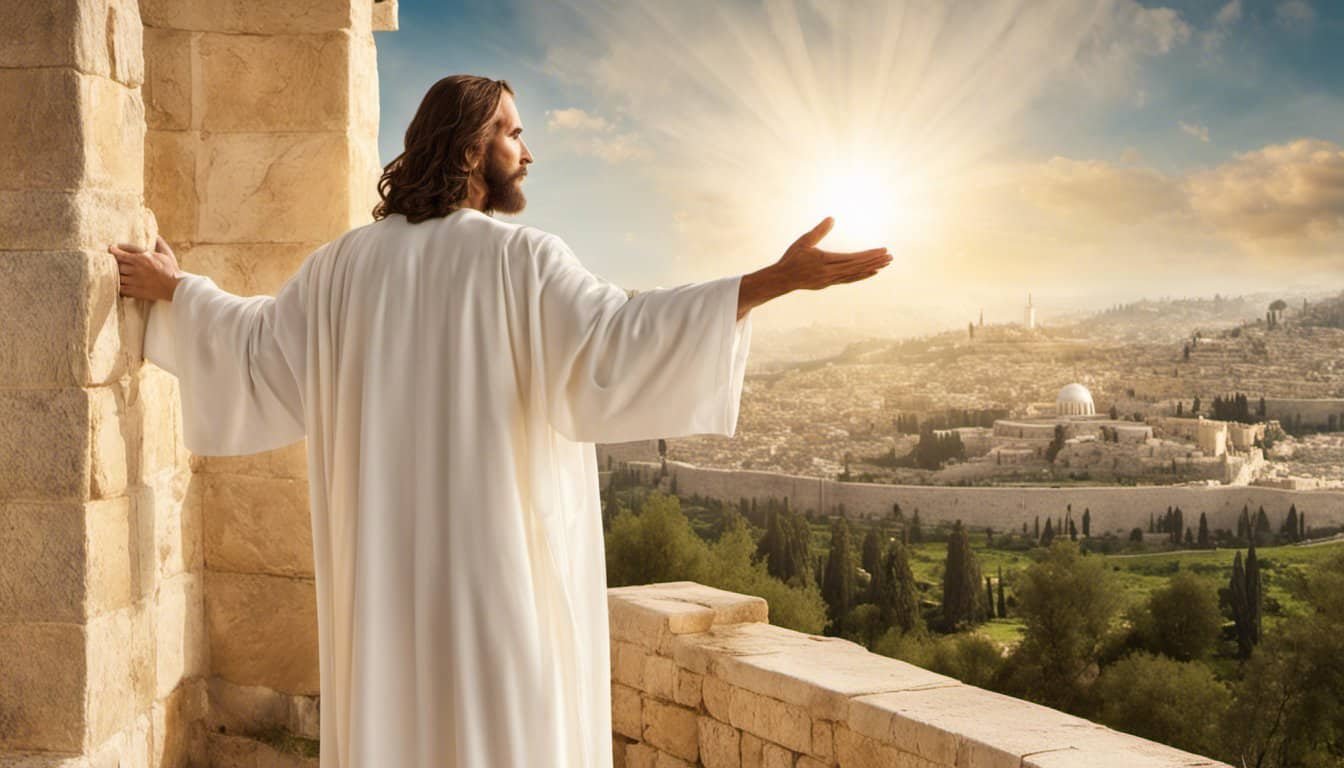The evolution of worship music is a fascinating journey that reflects the broader story of religious expression and collective identity. As a personal passion of mine, I’ve observed how worship music has been a vehicle for believers to express their adoration for God, evolving from traditional hymns to contemporary praise. The traditional hymns often encapsulate rich theological concepts and have been an integral part of Christian liturgy for centuries. Their structured melodies and lyrics provide a sense of solemnity and reverence within church walls.


In contrast, the arrival of contemporary worship music brought with it a wave of change, emphasizing accessibility and emotional engagement. This shift towards more modern sounds and lyrics resonates with today’s congregants, creating new ways to connect with God. Worship leaders play an influential role in this transition, crafting services that encapsulate the spirit of the times while retaining the core purpose of praise. As I’ve witnessed, these current compositions extend beyond church services, influencing Christian culture and personal devotion.
Key Takeaways
- Worship music has evolved from traditional hymns to contemporary praise, reflecting changes in religious practices.
- Contemporary worship emphasizes emotional engagement and has broadened the role of worship leaders.
- Modern worship music influences both corporate worship and individual spiritual experiences.
Historical Progression of Worship Music


Throughout the history of Christian music, I’ve observed a fascinating evolution from early Christian hymnody to the contemporary praise we often hear today. This journey has defined worship across centuries, influencing both the musical culture within churches and wider societal norms.
Early Christian Hymnody
In the early centuries of the church, I’ve learned that hymns played a crucial role in congregational worship. Derived from the Psalms and the rich texts of Scripture, these early hymns were acapella or accompanied by simple instruments, showcasing a deep theological understanding. It’s clear that hymns like the Te Deum and Phos Hilaron are some of the earliest examples, and they set a pattern for corporate worship that has echoed through the ages.
Impact of the Reformation
The Reformation was a pivotal period that transformed the landscape of Christian worship music. Reformers like Martin Luther and John Calvin catalyzed this shift; Luther, for instance, introduced hymns in the vernacular that congregations could sing collectively, establishing the notion that everyone could participate in worship through music. The use of the organ also became prevalent, I’ve noticed, especially in Lutheran circles, to support congregational singing and enhance the worship experience.
Rise of Gospel Songs and Hymns
Moving into the 19th and early 20th centuries, I’ve seen a surge in the popularity of gospel songs and hymns, particularly in the United States. This era birthed songs that are still cherished in many congregations, with lyrics that were personal and reflected a more intimate experience of faith. Gospel songs often told stories or offered messages of encouragement, while traditional hymns continued to incorporate elements of doctrine and praise, utilising the organ and other instruments to enrich the singing.
Worship music has undoubtedly changed dramatically over the centuries. It’s fascinating to see how it has both shaped and been shaped by the culture and theology of the church throughout history.
The Shift to Contemporary Worship

In my exploration of worship music, it’s evident how profound changes have occurred with the onset of contemporary styles, particularly from the late 20th century onward.
Influence of the Jesus People Movement
In the late 1960s and early 1970s, the Jesus People Movement flourished as a vital catalyst for contemporary worship music. I’ve found that this spiritual movement, with its roots in the counterculture of the time, adopted rock music as a form of expression and brought it into worship settings. This integration significantly impacted Christian music and introduced a new generation to worship through a style that resonated with them deeply.
Mainstreaming of Contemporary Christian Music
As we navigated further into the 20th century, contemporary Christian music (CCM) shifted from the fringes to the center stage of mainstream music media. I’ve observed that artists and bands wielding guitars and modern rock elements started to dominate the scene. These musicians carved out a space in the wider musical landscape, impacting both the industry and worship practices across many denominations.
The Worship Wars
Throughout my journey, the term “Worship Wars” has surfaced repeatedly, encapsulating the conflict between traditional and contemporary worship preferences. These disputes often centered around the use of modern worship songs, which featured contemporary lyrics and music styles, as opposed to classic hymns. The “wars” highlighted the challenge of incorporating contemporary worship music within communities while maintaining unity, something that has been a complex but essential part of the music’s evolution.
Modern Worship Music Landscape

In exploring the modern worship music landscape, I’ve found a dynamic and varied scene. It’s fascinating to see how worship music has transformed over the years, influenced by various genres and artists.
Dominant Musical Styles
Pop-infused melodies and heartfelt lyrics characterize the dominant musical styles in today’s worship music. Artists like Hillsong have spearheaded this movement, integrating elements of pop and rock to create anthems sung in churches worldwide. The influence of contemporary Christian music (CCM) is undeniable, as it brings a concert-like atmosphere into the weekly worship service.
Proliferation of Worship Bands and Artists
The proliferation of worship bands and artists in the last few decades has been remarkable. Bands like Hillsong United and networks such as Maranatha! Music have risen to prominence, while songwriters like Keith and Kristyn Getty have contributed rich, theologically sound hymns. This growth reflects a broader acceptance of a diverse range of musical expressions within the church.
Integration in Local Congregational Settings
In local congregation settings, the integration of modern worship music has become a defining characteristic of the Pentecostal and charismatic movements. In my experience, this has led to a more expressive form of congregational music, with a focus on personal and communal encounters with God. Churches have adapted their services to include these new forms of worship, with many embracing the contemporary style as a core part of their identity.
Role and Influence of Worship Leaders

In my role as a worship leader, I’ve come to understand my significant impact on believers through leading congregational singing and offering both spiritual and musical guidance.
Leading Congregational Singing
When I lead a congregation in singing, it’s about much more than just the music. My aim is to engage every individual in a collective act of worship, fostering a sense of unity and shared purpose. I select songs that speak to the congregation’s heart and encourage participation. My guidance in this is essential; as I help set the tone and pace, the congregational singing becomes an experience that binds the community together, fostering spiritual formation.
Spiritual and Musical Guidance
Beyond the melodies and harmonies, my role encompasses mentoring believers in their spiritual journey. Through music selection and lyrical content, I challenge and comfort the congregation, aiding their personal and communal worship experience. I help to underscore the message of the sermon or the theme of the service, integrating musical guidance with spiritual leadership. Together, these elements allow me to serve not just as a musician, but as a shepherd guiding the flock towards a deeper connection with the divine.
Worship Music Beyond the Church Walls


In recent years, I’ve witnessed the remarkable journey of worship music as it transcends the traditional church setting. Its melodies and messages have found new homes that extend its reach and impact.
Concerts and Conferences
At worship concerts and conferences, the communal experience of faith through music takes on a larger scale. I’ve seen firsthand how events like the Passion Conference transform arenas into vibrant places of praise. The proliferation of Christian Contemporary Music (CCM) festivals, such as the renowned Hillsong Conference, also showcases how these gatherings unite the evangelical community in worship, emphasizing a collective, spiritually enriching experience that rivals mainstream music events in attendance and enthusiasm.
Worship Music in Media and Recording Industries
The impact of worship music has grown significantly within the media and recording industries. Chart-topping albums from artists in the CCM genre often gain a presence in mainstream music charts, with bands like Hillsong United and Bethel Music leading the way. Their success illustrates a shift where worship music not only serves its purpose within the confines of Sunday services but also resonates with a broader audience through radio, streaming services, and television. Worship music’s lyrics and tunes have become a staple in many households, proving that their message of faith and hope has a place in everyday life, beyond the church walls.
Cultural and Theological Contexts

In my exploration of worship music, I’ve seen how deeply the diverse traditions within Christianity and the complex doctrines entwined in worship songs have shaped their evolution.
Diverse Traditions within Christianity

In my observation, Christian worship has always been framed by a kaleidoscope of musical styles, each reflecting the unique cultural and theological influences of the various denominations. For evangelicals, spirited and emotive praise music encourages active participation, while reformed congregations might lean towards more structured and reflective hymns. The texture of church music is woven from the historical and doctrinal threads of its surrounding culture, resulting in a rich tapestry of worship practices that vary from one Christian community to another.
Doctrine and Theology in Worship Songs
When I consider the doctrine and theology within worship songs, I find it’s not merely about musical preferences but about singing the congregation’s beliefs. Lyrics grounded in Biblical study serve both as expressions of faith and as tools for imparting doctrine. Whether it’s through the grandeur of a hymn from centuries past or the heartfelt simplicity of a contemporary praise song, evangelicals often seek a reflection of their theological views in the songs they choose for worship. The infusion of theology into music is a way of engaging with and affirming one’s beliefs, a practice that’s pivotal to Christian worship.
Technology’s Role in Worship Music

In my exploration of worship music’s evolution, I’ve seen technology drastically affect both the sound and the reach of this sacred art form. From the introduction of new instruments to the use of the internet, these technological advancements have transformed how I engage with and experience worship music.
Instruments and Technological Advances
When I think about musical innovation in worship, the first thing that comes to my mind is the rich sound of a grand piano filling a church or the vibrant strum of guitars igniting a congregation’s passion. The development of the electric guitar further energized worship music, adding a contemporary edge that appealed to younger generations like mine. It’s fascinating to consider how these instruments, once seen as novel, are now integral in crafting the worship experience.
- Piano: Steeped in tradition, yet versatile for various music styles.
- Guitars: Offer a range of acoustic tones that underpin many worship songs.
- Electric Guitar: Brings a modern sound that parallels secular music trends, making worship more relatable.

The ongoing advancement in instrument technology continues to open new possibilities for musical expression within worship settings.
The Online Spaces of Worship Music
The internet’s role in worship music is truly something I marvel at. It has created online spaces where I can access a myriad of worship songs, learn new pieces, or participate in virtual choirs. The ease of sharing and learning music through websites and social media platforms has expanded my understanding of worship far beyond my local community. Whether it’s through tutorial videos or streaming services, technology has made worship music incredibly accessible, dissolving barriers that once might have limited participation.
- Tutorial Videos: Enable me to master new worship songs at my own pace.
- Streaming Services: Provide instant access to a diverse array of worship music anytime, anywhere.
Technology, indeed, has brought a seismic shift in the way I interact with worship music, making it a more inclusive and wide-reaching expression of faith.
Psychological and Sociological Effects

In this section, I explore the profound effects that worship music has on both individuals and communities. Modern worship music not only enhances personal devotion but also strengthens the bonds of communal worship through shared experiences.
Music’s Impact on Individual Devotion and Corporate Worship

I’ve found the interplay of worship music with individual devotion and corporate worship fascinating. Personal devotion is deeply affected by music; it can guide a range of emotions, from joy to contrition, helping me connect to the divine on a personal level. How Worship Rewires Our Brains and Bonds Us Together illustrates that hymns and contemporary praise music have a neurological impact that can enhance spiritual experiences. When music permeates the worship setting, the collective act of singing fosters unity among congregants. As different modes of congregating change over time, I’ve noticed the consistent transformative power of music to adapt and maintain its central role in worship.
Community Building Through Shared Musical Experience
The creation of a strong community is one of the most beautiful outcomes I observe in worship through music. A well-chosen set of tunes has the potential to bring people closer together, strengthening the sense of togetherness. Singing the same songs, sharing the same rhythms and melodies—it all contributes to a powerful, communal worship experience. There’s a particular kind of fellowship that emerges when we lift our voices in unison, one that infuses community building with shared sentiment and purpose. As I’ve seen, melodies can act as social glue, bonding individuals into a more cohesive group.
Worship Music in Global Perspective

In my exploration of worship music, I’ve found that its evolution is a vivid tapestry of cross-cultural connections and influence. It’s fascinating to see how worship music not only spreads but also adapts to new cultural landscapes.
Expansion of Worship Music Across Nations
Worship music has traversed boundaries and become a global phenomenon, influencing and uniting individuals and communities. From the United States, where contemporary worship music has its roots, this genre has spread worldwide. I’ve seen hymnals translated into various languages, and new songs created that reflect the local culture yet share a common thread of faith and devotion. This international expansion serves as both a form of spiritual expression and, in some cases, an aid to congregations seeking to foster a sense of global kinship.
Adaptation and Influence on Various Cultures

As worship music permeates different cultures, it adapts to local customs and languages. I’ve noticed traditional instruments being incorporated into worship services from Africa to Asia, creating a unique blend of the contemporary and the traditional. This adaptation process can revitalize a community’s worship experience, making it both individualized and yet part of the global worship tapestry. Countries around the world have their worship expressions, and through this exchange, a rich dialogue emerges. It’s a dialogue where songs from a small church in the United States might find their way to a congregation across the sea, and vice versa, each taking on new life in their new homes.
Future Trajectories of Worship Music

As I look to the future of worship music, it’s clear that the genre is set to evolve with bold innovations and a strong infusion of modern technology. These changes aim to enhance the way we experience and interact with timeless truths through music.
Emerging Trends and Innovations
Worship music is constantly evolving, embracing new sounds and styles. In coming years, I anticipate seeing a blend of various musical genres as artists experiment with cross-genre collaborations. Amazing Grace might one day be echoed in a format we’ve never heard before, reaching new audiences while retaining its core message. This intertwining of the old and the new will help keep the genre of Christian music vibrant and relevant to all generations.
The Integration of Modern Technology
Advancements in technology are set to revolutionize how worship music is produced and consumed. From high-quality live streaming of worship services to the use of sophisticated sound engineering and virtual reality for immersive worship experiences, technology will enable worship music to transcend traditional boundaries. I envision congregations engaging with music using apps that provide lyrics and chord charts in real-time, helping people feel more connected to the music and the message it delivers.
Engaging With Worship Music Practically


As we look at the practical side of worship music, we’ll explore how I can discover new songs that resonate with my faith and integrate these songs into my daily life, both privately and within my community.
Ways to Discover New Worship Music
When it comes to discovering new worship music, I start by browsing curated playlists and charts from reputable organizations and fellowships. Christian music platforms often have up-to-date lists with the latest and most popular songs that can enhance my worship experience. Here’s a brief checklist I use to find new praise music:
- Streaming Services: Subscription services like Spotify or Apple Music offer worship playlists updated weekly.
- Social Media: Following worship artists and ministries on platforms like Instagram can lead me to new releases.
- Music Reviews: Reading articles from The Gospel Coalition provides insights into how contemporary worship music is shaping the church.
- Worship Conferences: Attending events where worship leaders share their music can introduce me to songs that might not be as widely known.
Incorporating Worship Music into Personal and Communal Practice
To integrate worship music into my day-to-day life, I create a personal playlist that includes both timeless hymns and contemporary praise songs. Mornings are a great time for setting the tone for the day with uplifting music. For a communal setting, like my church’s fellowship gatherings, we select songs that align with our congregational theme and doctrine.
- Personal Devotion: I allocate time for worship during personal devotions, often using music as a backdrop to prayer and Bible study.
- Small Groups: In my small group, we often start or end our meetings with a song to foster a spirit of worship.
- Church Services: By participating in the music ministry or simply joining in the congregational song, I become part of the shared worship experience.
Through practice and participation, both modern worship songs and hymns become a deeper part of my spiritual journey.












